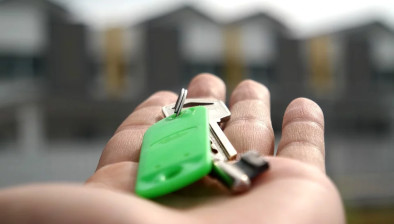Revised Land and Buildings Transaction Tax rates ‘will help first-time buyers’
First-time buyers have been handed a tax boost after finance secretary John Swinney announced sweeping revisions to his replacement for stamp duty which will see 50 per cent of all household transactions paying no tax.
Revisions to the Land and Buildings Transaction Tax (LBTT), which will replace Stamp Duty from April 2015, will also see over 40,000 buyers paying less on the purchase of a new home.
The threshold for nil rate is increased from £135,000 to £145,000, with a 2 per cent rate between £145,000 and £250,000, a new 5 per cent rate at £250,000 to £325,000, a 10 per cent rate at £325,000 and £750,000 and the 12 per cent rate now on all sales above £750,000 (as opposed to the initially proposed threshold of £1 million).
The overall impact of these proposals will be to lift another 5,000 or so households out of paying any property transaction tax and will not be as punitive as the original LBTT proposals for those buying family homes in relatively affluent parts of the country such as Aberdeen and Edinburgh. The cut-off point where people pay more compared with current UK Stamp Duty rates is now just over £330,000.
However, transaction values at the top end of the market will have to pay markedly more than they do now under Stamp Duty, with the tax rate up by 60 per cent for those buying properties at £500,000 (to over £23,000 compared to under £15,000 now).
Welcoming the plans, John Boyle, director of research and strategy, at estate agent Rettie & Co said it would help first-time buyers and families.
He added: “First-time buyers were the key target group that the Scottish Government wanted to benefit with its changes to property tax, but it seemed to be at the cost of those moving to more family homes in the middle parts of the market in places like Aberdeen and Edinburgh. This has now been changed and both these groups will now benefit.”
Sarah Speirs, director of RICS Scotland, said the increase of the minimum threshold to £145000 will further assist first time buyers, potentially increasing activity at the lower end of the market.
She said: “The amended bands should reduce distortion and ensure those at the top end of the market contribute equitably, however, we will continue to monitor theupper end of the market as there is potential for it to stagnate under LBTT, and if we want a functioning market, it has to work at all levels.”
Homes for Scotland chief executive, Philip Hogg, said the impact of the revised LBTT changes remains to be seen.
He added: “We are pleased that the deputy first minister has paid some notice to our call for the introduction of a new intermediate band with the 5 per cent rate for property purchases between £250,000 and £325,000. Additional support at market entry level is also welcome but we need a healthy, functioning market for all price brackets.
“It therefore remains to be seen whether the sharp 10 per cent increase for purchases above £325,000 could still prove too punitive on growing families and aspirational movers, leading them to stay put and others unable to progress up the housing ladder.”
Mr Swinney said: “I have always been clear that I intended for the devolved taxes to be revenue neutral and that the design of the taxes and the associated bands would be influenced by the four maxims set out by Adam Smith, particularly that taxes should be proportionate to the ability to pay. These principles underpinned the tax proposals in the Draft Budget.
“One consequence of the Chancellor’s announcement in December is that the amount of revenue I am required to raise to meet that principle of revenue neutrality is lower than anticipated at the time of the draft budget.
“In order to remain true to my principle that the first rates and bands of the devolved taxes should be revenue neutral, it is only right that I review the proposed tax rates which I set out last October. In doing so I will remain true to all of the principles that I established in October.
“My priority was then, and remains now, to help first-time buyers to enter the housing market and to assist people as they progress through the property market. Consistent with the principle that tax should be proportionate to the ability to pay, the burden of taxation should fall on each according to their ability.
“Tax rates should also be designed to support the Scottish market. The average house price in Scotland is £170,000. The average detached house is around £244,000. In contrast the average house price in London is £510,000.
“With 50 per cent of transactions lifted out of tax altogether, the measures I am proposing today send a very clear message.
“The priorities set out in the Draft Budget reflected those we established in the Government Economic Strategy but were influenced by the aspirations so tangibly expressed in the Referendum campaign, a desire to live in more prosperous and much fairer country than we do today.
“In exercising its first judgments on national taxes, this Government has put fairness, equity and the ability to pay at the heart of what it has done. Where we have power to do so, this Government will do all it can to help people in Scotland enter the housing market, because it is the right thing to do for our economy and our communities.”















